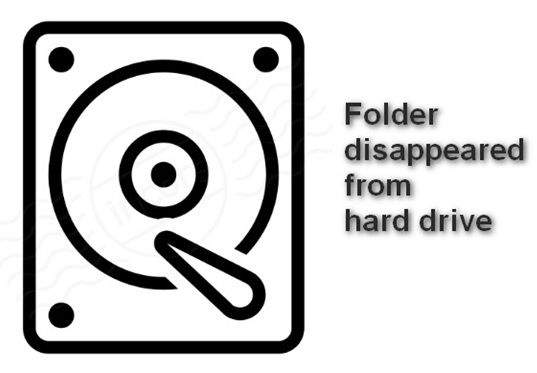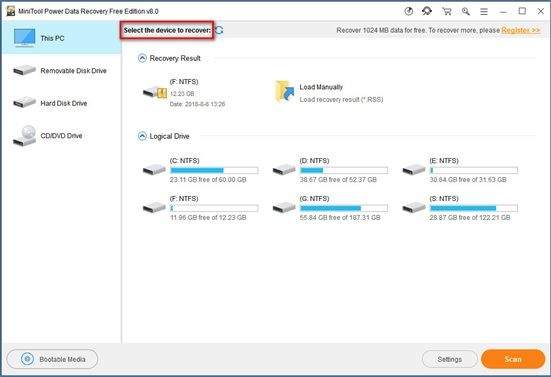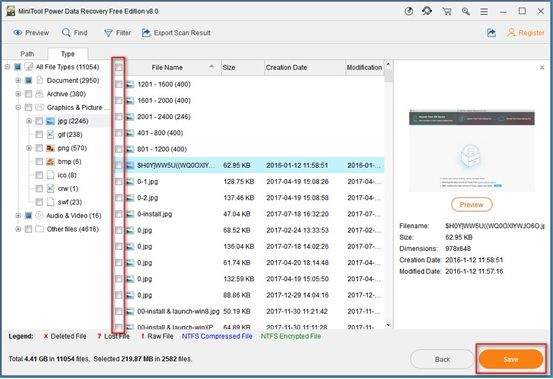How To Recover Files/Folder Disappeared From Hard Drive
Everyone knows folder is used to store and manage multiple files, but few of them realize the fact that even though a whole folder was lost, it’s still possible to rescue the important files here. Today, I’m going to dive into the topic – how to recover the folder disappeared from hard drive suddenly.
Recovering Missing Folders Is Important & Urgent
It is certainly true that lost files recovery will draw your attention most after folder disappeared from hard drive (or any other devices). This is reasonable because a folder itself is useless; it only becomes valuable when useful files have been saved to it. Now, having said that, let’s take a closer look at how to recover missing folders (or, frankly, the files).

3 Actions to Ensure File Security
- Don’t ever save new items to the drive including the folders which are just disappeared.
- Do the files recovery work as soon as you can (main part).
- Schedule a backup after finding lost files & folders.
How to Recover Folder Disappeared from Hard Drive
Of course, the very first step is to find a folder recovery tool you can rely on.
Then, you need to follow the operation tips to carry out the recovery job step by step carefully. Firstly, you’re expected to choose the device from which the folder is disappeared.

Secondly, you should select the partition to which the lost folder belongs.
Thirdly, click on the “Scan” button on the bottom right. Then, wait for the scan.
Fourthly, browse the found items one by one in order to pick out the files you want to recover from the disappeared folder.
Fifthly and the final step is to check all the files you need and click on the “Save” button (also on the bottom right) to store them to another path.

When this series of actions have been done, I suggest you back up all the important files (existing ones and recovered ones) immediately.
One Way to Minimize the Possibility of File Loss
I guess it’s easy to understand this: the possibility of losing data in a poor-quality hard drive is much larger than that in a high-quality hard drive. Well, how can you choose a hard drive with high quality? Here are some parameters that can determine a good hard drive. After knowing this, you may prevent the folder from disappearing from hard drive sometimes.
Factors That Forms a Good Hard Drive
By looking at the following aspects, you can distinguish good hard drives from the bad ones.
High capacity
It is one of the most important parameters of the hard drive, since hard drive acts as the main storage device for a computer. The unit of hard drive capacity is megabytes (MB) or gigabytes (GB). 1GB equals to 1024MB, while 1TB equals to 1024GB. However, the hard drive manufacturers usually take 1GB as 1000MB when defining the hard drive capacity.
Fast transfer rate
It is actually the data read & write speed of the hard drive and its unit is megabytes per second (MB/s). Hard drive transfer rate includes internal transfer rate and external transfer rate. Internal transfer rate reflects the of the hard disk performance when the buffer is unused and mainly depends on the rotational speed of the hard drive. External transfer rate reflects the data transmission speed between the system bus and the hard drive buffer.
Large cache
It is indeed a memory chip on the hard drive controller; having extremely fast access speed, the cache is the buffer between internal memory and external interface. Data need to be exchanged constantly between hard drive and memory when hard drive access fragmentary data.
So if there’s a large cache, it can be used to set those bits and pieces of data temporarily, greatly reducing the outer system load and improving data transmission speed.
High rotational speed
Undoubtedly, the rotational speed is the most striking performance parameter of hard drive except for capacity. Whenever a hard drive appears on the market, its rotational speed will be absolutely involved in the promotional materials. Rational speed is one of the key factors that determine the internal hard drive transfer rate. All in all, rational speed has a great impact on the instantaneous and sustained transmission speed of hard drive.
Low average access time
It refers to the time required by the magnetic head to reach the target track from the starting position and find the sector in which the data you need to read/write locate. The hard drive latency means that the magnetic head has already reached the target track, but it still have to wait for the target data sector to rotate to the position under the head before it can finally read data.
As a result, reflecting the read and write speed of hard drive, the average access time is equal to the average seek time plus average latency time.







